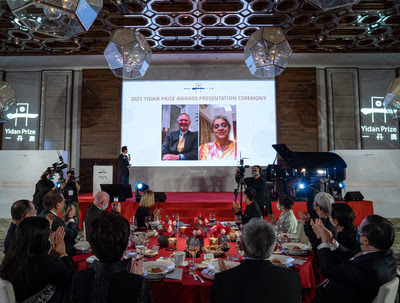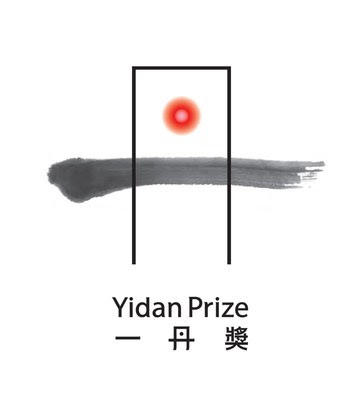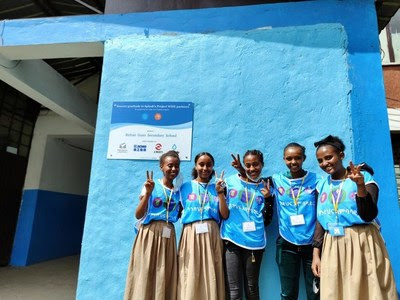HONG KONG, 6 décembre 2021 /PRNewswire/ — La Fondation du Prix Yidan, la fondation philanthropique mondiale à l’origine de la plus haute distinction dans le domaine de l’éducation au monde, a accueilli hier le Sommet du Prix Yidan 2021 et la cérémonie de remise des prix.

L’événement hybride mondial a rassemblé des décideurs et des experts en éducation pour débattre et discuter des questions éducatives les plus urgentes au monde et des solutions pratiques et innovantes pour un avenir meilleur. L’événement a également célébré et reconnu officiellement le travail pionnier des lauréats du Prix Yidan de cette année.
Au cours d’une série de tables rondes, les participants ont échangé de nouvelles idées pour offrir à tous une éducation juste, accessible et de qualité. Les thèmes incluaient notamment les pertes d’apprentissage découlant de la COVID-19, les solutions d’éducation évolutives et l’apprentissage par le jeu. Le rapport de l’UNESCO intitulé « Repenser nos futurs ensemble : un nouveau contrat social pour l’éducation » a également été abordé et les participants ont pu discuter de l’importance de l’éducation pour assurer un avenir prospère aux enfants.
Sommet « Créer un avenir meilleur grâce à l’éducation »
Dans un panel, le professeur Eric A. Hanushek, lauréat du Prix Yidan 2021 pour la recherche en éducation, et agrégé supérieur au titre « Paul and Jean Hanna » à l’institution Hoover de l’Université de Stanford, a souligné le rôle crucial des enseignants dans l’enrichissement de la qualité de l’éducation. Le distingué panel d’économistes a demandé plus de soutien pour les enseignants qui s’attaquent aux lacunes en matière de connaissances chez les enfants.

Le Dr Rukmini Banerji, lauréate du Prix Yidan 2021 pour le développement de l’éducation et PDG de la Pratham Education Foundation, a expliqué pourquoi elle pense que les enfants prennent du retard à l’école et si les programmes scolaires sont trop rapides. Elle était accompagnée des professeurs Esther Duflo et Abhijit Banerjee, lauréats du prix Nobel d’économie en 2019, pour discuter de la façon de mettre en œuvre des changements significatifs dans l’éducation, depuis l’élaboration de solutions efficaces et évolutives jusqu’à l’adaptation du programme d’études au niveau de chaque enfant.
Parmi les participants figuraient le Dr Sobhi Tawil, directeur de l’avenir de l’apprentissage et de l’innovation à l’UNESCO ; le Dr Jaime Saavedra, directeur général du pôle d’expertise en éducation au sein du Groupe de la Banque mondiale ; et le Professeur Ludger Woessmann, professeur d’économie à l’Université de Munich, entre autres.
Célébration des lauréats du Prix Yidan 2021
L’événement s’est terminé par une cérémonie de remise des prix soulignant les réalisations remarquables des lauréats du Prix Yidan de cette année. Le professeur Hanushek et le Dr Banerji ont reçu officiellement le Prix Yidan 2021 pour la recherche en éducation et le développement de l’éducation en reconnaissance de leur travail novateur visant à améliorer la qualité de l’éducation et les résultats pour les apprenants à grande échelle.

Le Dr Charles CHEN Yidan, fondateur du Prix Yidan, a déclaré : « Aujourd’hui, nous célébrons le travail du professeur Hanushek et du Dr Banerji. Dans un monde qui se remet de la pandémie, nous avons besoin d’innovations plus efficaces. Repensons l’avenir : un avenir où les innovations apportent des changements réels et percutants. C’est un avenir que nous pouvons créer et un monde dont nous serions tous très heureux de faire partie. Ensemble, nous pouvons créer un monde meilleur grâce à l’éducation. »
Candidatures pour le Prix Yidan 2022
Les candidatures pour le Prix Yidan 2022 sont ouvertes jusqu’au 31 mars 2022. Le 12 janvier 2022, la Fondation du Prix Yidan organisera un webinaire pour partager plus d’informations sur le prix, expliquera comment y participer et ce que les juges recherchent chez un lauréat. Inscrivez-vous ici.
À propos de la Fondation du Prix Yidan
La Fondation du Prix Yidan est une fondation philanthropique mondiale dont la mission est de créer un monde meilleur à travers l’éducation. Grâce à son réseau d’innovateurs, la fondation soutient les idées et les pratiques dans le domaine de l’éducation, en particulier celles qui ont le pouvoir de changer positivement les vies et la société.
Le Prix Yidan est un hommage à l’éducation inclusive qui reconnaît les personnes ou les équipes qui ont contribué de façon importante à l’éducation.
Photo – https://mma.prnewswire.com/
Photo – https://mma.prnewswire.com/
Logo – https://mma.prnewswire.com/


